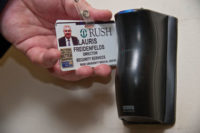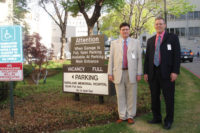
The economic downturn and the growing concern about foreign threats has placed increased pressure on CSOs today to beef up protection of physical, informational and personnel assets in their enterprises. This is a very different security world than a decade ago and one that requires Proactive Security Management (PSM). Such a plan enables CSOs to efficiently plan for worst-case scenarios rather than react to them inefficiently. A thorough understanding of a company’s physical, personal and informational assets helps foster such focused security policies. The desire to reach this level of security has prompted many CSOs to restructure their policies toward a PSM approach.
Through proactive planning like this, response time and cost are reduced when a reactive situation occurs, says Steven P. Seitz, global security contract and strategic planning manager at Caterpillar. “By identifying threats and vulnerabilities ahead of time, we structure the response with the necessary resources.”
Mobile and Global
While no manufacturing occurs at Ernst & Young, Washington, D.C., the company’s Director of Security John Imhoff says the organization has something just as valuable: information. To protect corporate and client information, Imhoff says an access control system is embedded with an enterprise system to ensure authorization. E&Y physical security is coordinated with information security to afford comprehensive protection.
Additionally, he notes the company has refocused its PSM to harden the workplace environment against threats, which he says is a direct result of the economy. “Security is about deterring and forestalling a crisis any way you can,” says Imhoff. “CSOs should understand that we are in a changing threat environment and should have flexible procedures in place to recognize these changes and secure their organizations.”
Safety is Vital in Healthcare
For companies like WellPoint, a health benefits company, and Lancaster Regional Medical Center (LRMC), protecting employees and assets is vital, but so is assuring the safety of visitors to their sites. WellPoint’s proactive security approach helps the company understand potential risks before they get to the front door. “We reside in multi-tenant buildings around the country, which can pose certain risks, and we are in the healthcare business, which is a hot topic today and one that presents challenges to our security,” says Eric Levine, staff vice president and director of corporate security.
WellPoint hired Koorsen Fire and Security, Inc., a national integrator, to upgrade the security of the organization by installing a new access control system and implementing security standards. “A customer visiting our site must have a good experience and their safety is in our hands,” says Levine.
Best in Class Living with Best in Class Security
Escala is a condominium tower that adorns the skyline of Seattle at the corner of 4th Avenue and Virginia Street. The building has private elevators to most units, a private club, large balconies and upscale finishes. Escala will eventually include 280 condominium units ranging in size from 950 sq. ft. to 16,500 sq. ft.
In a high-end project like Escala, providing a high level of protection for residents is part of the unique selling proposition for the condominium. The architects were looking for an integrated approach with video surveillance and access control all managed through a single system. Access to the building is managed in sections; residents are allocated a specified elevator for their section that they use to gain entry to their apartment. They do not have access to other sections or elevator lobbies. Residents see this level of security as part of the benefit that differentiates Escala from other condominiums in the area.




